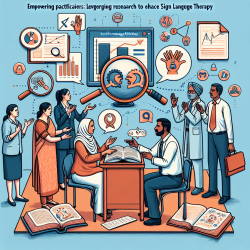The well-being of adolescents is a critical concern for practitioners, especially when it comes to mental health. A recent study titled "Health care costs and changes in subjective health-related quality of life among Finnish adolescents referred to secondary psychiatric out-patient services: a one-year follow-up study" provides valuable insights that can help improve treatment outcomes. This blog delves into the key findings and their implications for enhancing adolescent mental health services.
Key Findings
The study focused on three common adolescent psychiatric disorder groups: behavioral and emotional disorders, mood disorders, and anxiety disorders. Adolescents completed the 16D Health-Related Quality of Life (HRQoL) questionnaire at the start and end of a one-year period. Here are the main findings:
- The direct secondary health care costs did not differ significantly between the three patient groups.
- Adolescents with mood disorders showed a significant and clinically important improvement in HRQoL, which was not observed in the other two groups.
- Behavioral and emotional disorders, as well as anxiety disorders, did not show significant HRQoL improvement over the year.
Implications for Practitioners
The results indicate that while the financial investment in mental health care is substantial, its impact on HRQoL varies across different disorders. Practitioners can draw several conclusions from this:
- Focus on Mood Disorders: Given the significant improvement in HRQoL among adolescents with mood disorders, it is essential to prioritize effective treatments for this group. Evidence-based therapies such as Cognitive Behavioral Therapy (CBT) and psychopharmacological interventions can be particularly beneficial.
- Tailored Interventions: The lack of significant improvement in HRQoL for behavioral and emotional disorders and anxiety disorders suggests the need for more tailored interventions. Practitioners should consider individualized treatment plans that address the specific needs of these adolescents.
- Long-term Follow-up: The study highlights the importance of long-term follow-up to monitor and adjust treatment plans. Continuous assessment of HRQoL can help identify areas needing additional support.
Encouraging Further Research
While this study provides valuable insights, it also underscores the need for further research. Practitioners are encouraged to contribute to this growing body of knowledge by conducting follow-up studies that explore:
- The effectiveness of different therapeutic approaches for various disorders.
- The long-term impact of psychiatric interventions on HRQoL.
- The role of socioeconomic factors in treatment outcomes.
By engaging in data-driven research, practitioners can continue to improve the quality of care provided to adolescents, ultimately leading to better mental health outcomes.
To read the original research paper, please follow this link: Health care costs and changes in subjective health-related quality of life among Finnish adolescents referred to secondary psychiatric out-patient services: a one-year follow-up study.










